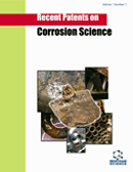Abstract
Membrane technology is receiving more and more opportunities to become a true implemented technology in many industrial applications. It is perfectly suited to answer some of the demands that are put forward in the new trends towards sustainable production and process intensification. Since many of these applications are in solvent environments, suitable membranes need new requirements including solvent compatibility and nanoporosity. In this chapter, a general overview is given on the progress that is made in the development of nanoporous, solvent-stable membranes. Emphasis is put on the synthesis of these membranes as well as on there stability. Both polymeric and ceramic membranes are described. However, this chapter is mainly focused on ceramic membranes and more specific hybrid organic-inorganic membranes made by post-synthesis modification or in situ methods. Synthesis methods such as organosilane and phosphonic acid grafting as well as a more recently developed method are discussed. The general aspects, advantages and drawbacks of each method are discussed in detail.
Keywords: Hybrid organic-inorganic membranes, solvent- stable membranes, post-synthesis modifications, in situ methods, organosilane, phosphonic acid grafting.






















